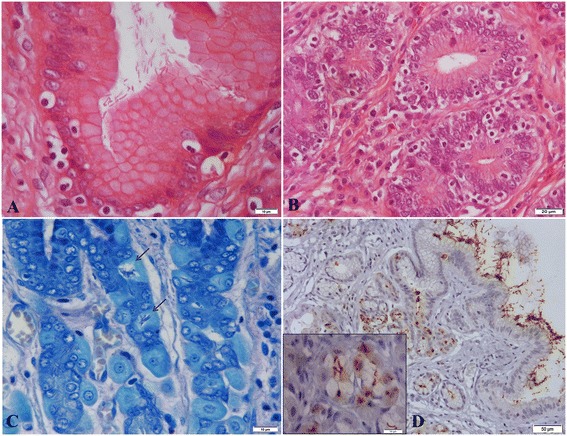Figure 1.

Helicobacter spp. in canine stomach. A) Numerous spiral-shaped bacteria colonizing the surface epithelium of the gastric pit. HE. Bar = 10 μm; B) Note the intraepithelial lymphocyte infiltration within the deeper gastric glands in the antral mucosa of a NHPH-positive dog. HE. Bar = 20 μm. C) Presence of NHPH inside the parietal cells of the canine gastric body region (black arrow). MG. Bar = 10 μm; D) Large amounts of Helicobacter antigen within the superficial gastric mucus and in the lumen of gastric glands in the body region of canine stomach. Immunoperoxidase-diaminobenzidine stain with Mayer’s haematoxylin counterstain. Bar = 50 μm. Inset shows Helicobacter antigen within parietal cells, sometimes detectable as well preserved spiral-shaped organisms or brown round dots. Immunoperoxidase-diaminobenzidine stain with Mayer’s haematoxylin counterstain. Bar = 10 μm.
